Our lineup is made up almost exclusively of Belgian style ales. We strive to make the best versions we can of these classic styles using the freshest ingredients and buying as close to home as is possible.
All of our house beers are naturally carbonated in the bottle. Beer is meant to have foam. The release of carbon dioxide not only creates more aroma, but amps up the flavor in the beer. Serving you beer in a bottle ensures that you are getting not only the amount you are paying for, but the best expression of our product.
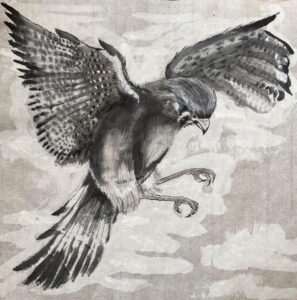
Le Crécerelle
(The Kestrel)
Style: Table Saison
ABV: 5.8%
This is our award winning petite Saison. Calling “Saison” a beer style is kind of like calling “Building” an architectural style. Saison (along with its cousin Biere de Garde) was traditionally any beer that a farm would brew to serve to field workers at lunch. There are no hard and fast rules other than it should be a refreshing to drink, lighter, lower ABV (relative to other Belgian styles) beer. Le Crécerelle fits that bill to a T. Brewed with crisp Belgian pilsner malt and a touch of rye accented with regionally appropriate hops, this is a beer for long conversations on warm days. It pairs with almost anything but goes especially well with a pork jowl taco with spicy Brussels sprout and apple slaw.
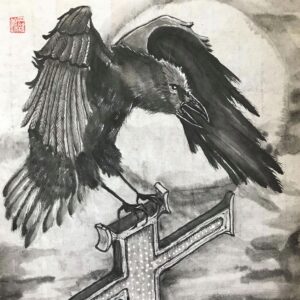 Le Corbeau
Le Corbeau
(The Raven)
Style: Check the board
ABV:Check the board
Le Corbeau is the label we use for styles we don’t regularly make. In the past this has included a brut IPA; a dark, strong saison; an Imperial IPA; and a Swedish julebryg among others. If you want to see what we’re playing with, you have to come in and see. Or you can check the beer list. You might even find a recent story entry that will explain the latest offering …
Some examples of past Le Corbeau iterations include a brut IPA, an imperial saison, a Belgian IPA, and a Scandinavian Julebryg (this has become a Christmas regular).
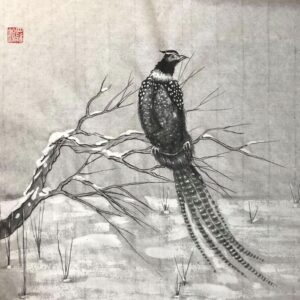 Le Faison
Le Faison
(The Pheasant)
Style: Biére Blanche (AKA Witbier)
ABV: 5.3%
A classic Belgian wheat beer which is the Belgian answer to the Heffewiezen of Germany or the American Wheat Beer. Once again, there is a wide latitude given to brewers of wheat beers in terms of added flavors and Belgian brewers have taken full advantage over the years. Ours hews mostly to the traditional prototype with a grain bill of wheat and Belgian pilsner malt finishing with a hint of coriander and California Cara Cara orange peel in place of the traditional Curaçao oranges that were available to early brewers of this style. Le Faison works very nicely as a refreshing counterpoint to Moroccan spiced duck sliders.
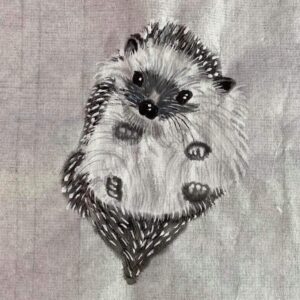 L’Herisson
L’Herisson
(The Hedgehog)
Style: Belgian Sour, we’ll call it Lambic-esque
(lambic is a protected designation)
ABV: 5.5%
One of the greatest beer styles in the world is the Lambic. This is the original “champagne of beers” crisp and tart with champagne style carbonation and a head that dissipates relatively quickly, this is a super refreshing beer that takes 2 years to make. L’Herisson releases occur seasonally starting in winter with an unadulterated lambic, moving on to spring with roasted strawberries, into summer with a refreshing touch of blueberry, and sliding fall with roasted summer peaches. Occasionally there will be a fifth release in there if we find a flavor that sparks our fancy. Maybe even a sixth …
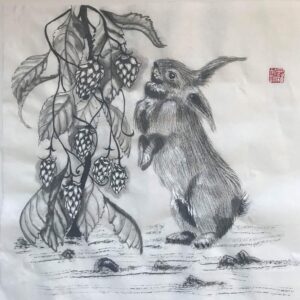 Le Géant de Flandres
Le Géant de Flandres
(The Flemish Giant)
Style: Belgian Pale Ale
ABV: 5.9%
Le Géant de Flandres is inspired by a beer my cousin, Bob Tupper, created back in the mid 1990s. Tupper’s Hop Pocket Ale was one of the O.G. craft beers from the Washington, D.C. area. It was brewed at Old Dominion Brewing from a recipe created by Bob Tupper (my mother’s cousin). At the time, it was considered to be grotesquely over-hopped though by today’s standards it is positively balanced. Sadly, the brewery was bought out by one of the mega beer companies and production ceased. When I started brewing, this was one of the recipes on my wish list. I tried to wrest it from my cousin but he was not giving it up. After nearly a decade, I had pretty much given up hope when I found the recipe in a reprinted volume of clone beer recipes from the 1990s. The grain bill remains largely the same but the yeast has been shifted to a Belgian strain, but the hops remain classic American fare, Cascade and Simcoe. We have an excellent, slightly bitter (though not in an arrogant way) beer to go with a cheesy burger.
 Le Renard
Le Renard
(The Fox)
Style: Belgian Blonde Ale
ABV: 6.7%
The Belgian blonde is classic golden Belgian ale of moderate strength. Often confused with the Trappist single style or patersbier, it is a lighter, golden ale showcasing all of the yeast character that is the hallmark of Belgian beers unattenuated by the addition of any kind of spice or fruit flavors. This is a beer drinker’s beer. We give ours a small twist with some rye that’s lightly smoked with applewood. This adds a hint of smokiness to the touch of spiciness that the rye naturally imparts. It makes an excellent companion for roast chicken and mashed potatoes with leeks.
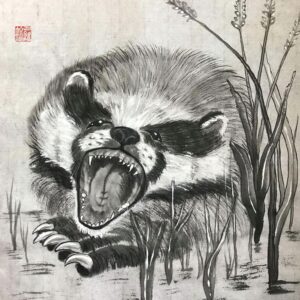 Le Blaireau
Le Blaireau
(The Badger)
Style: Trappist Dubbel
ABV: 9.5%
This is our award winning Belgian Trappist dubbel style ale brewed with California avocado honey instead of beet syrup. The longer sugar chains in the honey push the yeast to work longer and harder giving this beer exceptional esters with hints of banana, bubblegum, and blueberries that play with the chocolate notes from the dark roasted malts. Le Blaireau plays very nicely with Moules mariniere, with the acidity of the tomato sauce playing off of the malt character and accentuating the fruity esters.
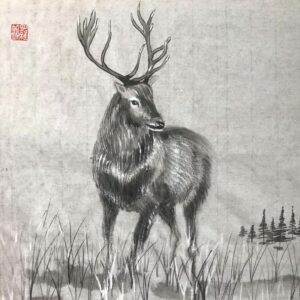 Le Cerf Rouge
Le Cerf Rouge
(The Red Deer)
Style: Trappist Tripel
ABV: 8.9%
A Belgian Trappist tripel style ale brewed with a touch of fresh sage. A deceptively smooth drinking, light colored ale that punches above its apparent weight with an 8.9% ABV, Le Cerf Rouge was created with an eye toward pairing with with hearty meals like roasted chicken but goes surprisingly well with mussels and spinach.

Le Petit Hibou
(The Little Owl)
Style: Belgian Strong GOlden Ale
ABV: 10%
A Belgian Strong Golden Ale is supposed to have some reference to Satan in it’s name/artwork but that would break with the theme of using Belgian fauna. The best we could do was the owl. Owls played a prominent role in European culture as harbingers of doom and omens of impending death from pre-Christian times (owls allegedly foretold the impending deaths of many a Roman emperor including Julius Casear) and through the works of Shakespeare (in both the aforementioned story of Julius Caesar and The Scottish Play).
In truth, an owl is a perfect representation of a Strong Golden Ale, quiet and smooth, but it packs a punch and brings pain and suffering to those who do not respect its power.
Beware the little owl …
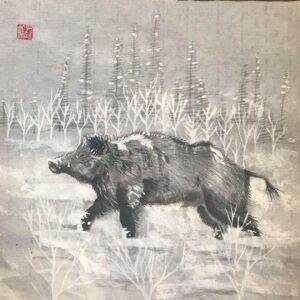 Le Sanglier
Le Sanglier
(The Boar)
Style: Trappist Quad
ABV: 10.5%
Belgian Strong Dark Ale, or a Belgian Quad? “What’s in a name? … A rose by any other name would smell as sweet …” (Sorry, Bill…) Two names for the same style. Suffice to say, this is the big boy. Don’t let the creamy head lull you into complacency. At the same time, have no fear, this is an ale you’ll want to savor. And keep your eye out for the seasonal release of barrel aged Le Sanglier around the same time Santa should start appearing in malls, not when he actually does.
